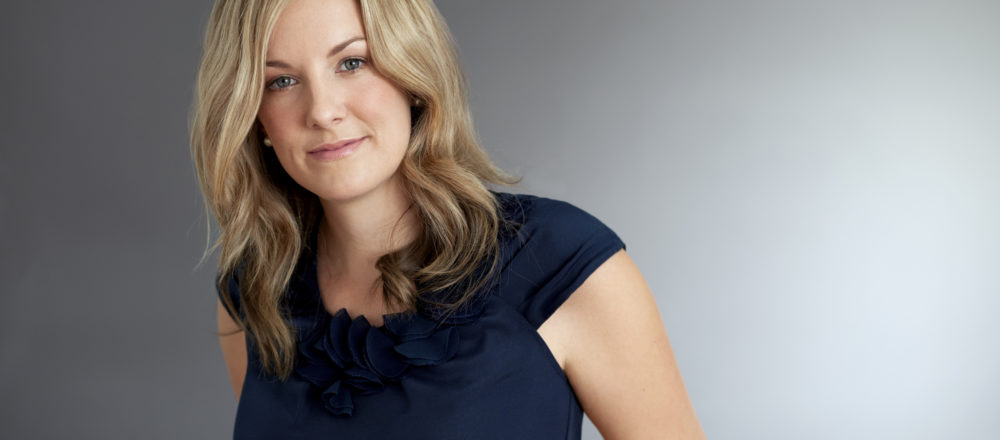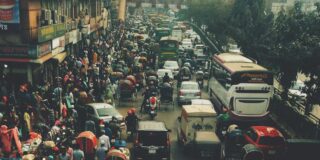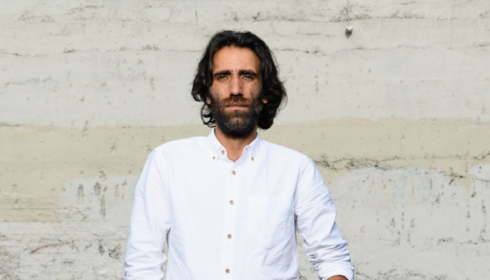Julie McKay has been the Executive Director for the National Committee for UN Women for the last seven and a half years. The National Committee for UN Women are responsible for fundraising, advocating and raising awareness for gender equality in developing countries, including Papua New Guinea and the Pacific.
Right Now: When do you think you realised you wanted to be an advocate, and why do you consider gender equality to be important?
Julie McKay: I think – if I am really honest – I did not know that I wanted to work in the gender equality space until I took on this job. I was always very passionate about women’s rights, particularly working in homelessness and domestic violence, but I don’t think it was until I had this opportunity, which I really took on because I loved the UN and I loved the concept of building a small team. Now, I am pretty confident that my whole career will be in the gender space. It’s been a big shift.
You have done a lot of work advocating for women’s empowerment and equal access across social areas, economic areas and employment. Right Now’s for this month is education. How do you think girl’s education fits into broader issues surrounding women’s empowerment?
Both personally and professionally, I’m a big believer in education. My mum is an academic, and it meant that from a young age, she had a strong belief that education would open doors and was essential. But, the other side of that was that having had an education, she felt an incredible responsibility to do something. Mum was always very strong on me about how education is a privilege, and while it should be a right, it is not a right that is afforded to everyone – so having had it, do something. That was very clear for me.
This has made me think about how we can make sure that other women have access to education, because it is transformational. That’s my own experience and belief.
I think the work that UN Women does in the region demonstrates how education is the key for women. For girls, it gives them the chance of a job, economic employment, it reduces the number of children on average in families, and has an impact on the health of those children. There is a lot of evidence that shows that more educated women – mothers – have less children, and those children are healthier.
When we think about education in the Australian context, we are talking about schools and universities. In the Pacific, what we are actually talking about is financial literacy.
We do a lot of work with female market vendors who are selling produce on the ground. They make up 80 per cent of market vendors are the sole earner in their family. They are running a cash-based business and that cash gets stolen, or the produce gets rained on or washed away. So, really basic things like supporting them to open bank accounts, negotiate prices, to know how to work in collectives – so, you know, you’re growing sweet potato, I’ll grow potatoes, you grow carrots – that work is transforming lives.
So, there is a really big contrast between education in Australia and education in the Pacific and what it means in terms of gender equality.
Exactly. It doesn’t have to be 12 years of schooling. It can be informal education, it can be programs like the girl guides, or YWCA, where they are teaching leadership. UN Women is doing that work in the region. That stuff, I think, is where the change happens.
The impact of Malala Yousafzai on the campaign for girl’s education in Pakistan has arguably raised awareness around the rest of the world. Do you agree that Malala had a big impact – that she was considered a champion for girl’s education – and what do you see coming from it? Is there a potential for lasting, sustained change?
It’s a great question. I think the sad thing for Malala is that before she was shot, she was an incredible advocate for education and nobody cared. Having been shot and having that story around it has escalated her into this incredible position where she is meeting world leaders and to her eternal credit and courage, she has been willing to say, “you know, I am going to take this forward and use whatever the piece of the time I have.” I really admire her and I think if she can hold the spotlight for ten years, that’s amazing. If she can hold the spotlight for ten months, that’s amazing. Whatever piece of this she can capture, she has raised awareness. She has been talking to world leaders about getting the Nigerian schoolgirls back. That is access that we don’t have, that our Prime Minister doesn’t have. So I think we need to support her. You can already start to see people criticising her and you know what – she is an incredible young woman who is incredibly courageous and brave, and I think the shock that the Western world felt knowing her story was enough to trigger something. I look at the shock that the Western world felt when the schoolgirls were kidnapped in Nigeria and I’m not sure that would have happened if there wasn’t already the momentum gained around girl’s education. I think she has started conversations that would never have happened otherwise.
Starting conversations is one of the most important things surrounding rights.
Absolutely. But, I think we all need to be mindful that one girl is not enough if we do not support her, if we can’t back her up with programs, advice, money and support, then she is still just one voice – and that’s too much pressure on a 14 year old girl. I think we need to think ahead. This year, we start to wrap up the Millennium Development Goals and they finish up next year. There was a big push around girl’s education. We have had some success but we didn’t meet any of the targets. The world, including the member states of the UN, need to think about the next set of goals and not just think about, well, there is momentum now, we’ll let it go on.
Do you think there are many problems within Australia relating to girl’s education?
Obviously, in comparison with many of the countries where UN Women works, Australia on anyone’s measure is doing well around education. That being said there is a whole range of marginalised groups around Australia that we assume have access to education that don’t. Specifically Aboriginal and Torres Strait Islander young women, women from culturally diverse backgrounds, refugee women, women with disabilities – and the men in those marginalised communities have similar access challenges. But, I think as a community in Australia there is an assumption that everybody has access to a free 12 year education and we probably don’t have an open enough conversation about what accessibility actually looks like. What is there is no school in your community? What if culturally you need a different structure of schooling? What if you have a model of family that does not support education? What does accessibility look like if you’re a woman with a disability? So I think that as we look at education in Australia, the conversation needs to be around how we recognise that we have strength in this area, how do we make this accessible, how do we address people that are facing multiple challenges and how do we ensure that we don’t just have a common cookie cutter approach? World standards would say that Australia is leading in education but I do worry for those marginalised groups.
The other part of girl’s education in Australia that is concerning is that 20 years ago, at the Beijing Meeting, the UN set these goals around education and training. I read them the other day. They talked about childcare always being a barrier to women’s education because it doesn’t match up to allow women’s workforce participation and it perpetuates the norm of girls as carers. They said that we needed to recognise formal and informal education. They recognised that we need to get more women into science, technology, engineering and maths. That we need to ensure learning materials are free from gender bias – for example, how science textbooks typically depict all doctors as men and all nurses as women. This stuff was all agreed to 20 years ago. As I read it I thought, “It’s the same conversation!” So I think in terms of problems with education the devil is in the details. Some of this stuff perpetuates stereotypes.
If you look at the statistics, more women are graduating from university than men. However, the numbers of executive positions occupied by women are not rising with the number of female graduates. What do you think this says about the impact, or the potential impact of education on women’s rights more broadly? How do you think we can deal with that discrepancy?
We are seeing more women graduate in just about every field now than we did ten years ago and a lot of the companies and leaders that we talk to will say “look, you’ve just got to give it time – this new generation of women, they’re the ones that will make the difference.” I always come back to the legal profession, where it’s been almost 20 years since we’ve been graduating women with higher grades at a higher rate than men and at about the 15 – 20 year mark you would expect to see almost all of those women come through to partnership and they’re not. There is no evidence. What we are seeing is continuation of drop-out rates after the first five years, of no return to work post-children, partnership places still being full-time, so anyone working part-time or flexibly not being considered. That stuff is really, really visible in the legal profession.
It is then about saying that education is not enough, because we can have the best and brightest women but there is no pipeline or pathway for them to get to the senior leadership roles. There is the childcare debate, but research coming out of the United States shows that even women who self-identify as being ambitious, who don’t have children – they still don’t get ahead. You then have to say that there are systemic barriers in our workforce, and I think they come into a couple of categories. One is, absolutely, some barriers around the ‘traditional worker’ model. We assume that the best worker, the ideal worker, is full time, available, committed, they look a certain way – tall, male, white. It is also things like our school hours. Our school hours at 9-3, so every single family, every single day has that two hour gap that they have to find. Germany has recently matched the school hours and the working hours to the same schedule, because they have realised there is no other way to do this. France has got a much stronger nannying model, with live-in nannies. Australia is doing a big childcare review and nannying has come out as one of the potential options.
These things are really important to recognise. It is about how you get women in the door. Waiting isn’t working – the legal profession tells us that. Hoping isn’t working – Beijing 20 years ago tells us that. So I think the only way we will get this to move is with really clearly articulated public targets.
Do you support public targets – such as quotas?
I do. I didn’t used to. The UN talks about temporary special measures, which are short-term measures to redress inequality, but they are legal. I think the challenge in Australia is that there is no political will to do it on either side of politics, but as a result, the conversation we should be having with companies is that you have to have targets. You need to publicly state them, because once you’ve done that, it turns out you can find qualified, amazing women who can take on the tasks. It is about creating a space. I have found in a lot of the work I do that it’s not just about getting in the door. The experience of being the only woman in a room of men is not optimal for your performance, because you’re nervous about where to sit, what to say, when to say it, how you’ll be perceived and all the other social stuff that goes on. It’s all about creating an environment where people can succeed.
What do you think is the best way to practically address these inequalities?
I don’t think you can have any change without leadership commitments. I think you need to get political and business leaders to consciously make decisions about what they want their companies and governments to look like, and to change the visibility of women in their organisations. It’s fascinating – everyone can tell you how many kids Julie Bishop or Gail Kelly or any of the female leaders have. If you do a survey of the top 10 corporate business male CEOs, no one would have any idea. So, part of the conversation is also the men making visible their other responsibilities, because they have them, and in doing that, allow for a conversation that says, “look, this isn’t about work or family – this is about peoples’ lives, and this is how it all fits in.” So, leadership commitment is essential.
I think we also need to realise systemic, historic barriers need to be shifted and it’s not the case that we can start now with a level playing field and hope. So, through temporary special measures, through scholarships, promotions, support programs, mentoring – initiatives that will drive participation – we will succeed. The other part of it is investment. I look at the UN agencies around the world, and UN Women has responsibility for 50 per cent of the population, and this is a bigger population group than any other agency, but we are by far the smallest agency. Even in Australia, we are a really significant supporter of UN Women, but our contribution as a country to UN Women is far smaller than to the other UN agencies. So, if we really want to drive gender equality, we need to invest in the agencies that are leading the agenda. That’s donors as well.
So, now, I really think about who I’m giving to – I always think about what the gender benefit is. That’s a big thing, whether it’s $25 or $5000.
Thanks Julie, it was great to talk to you.





